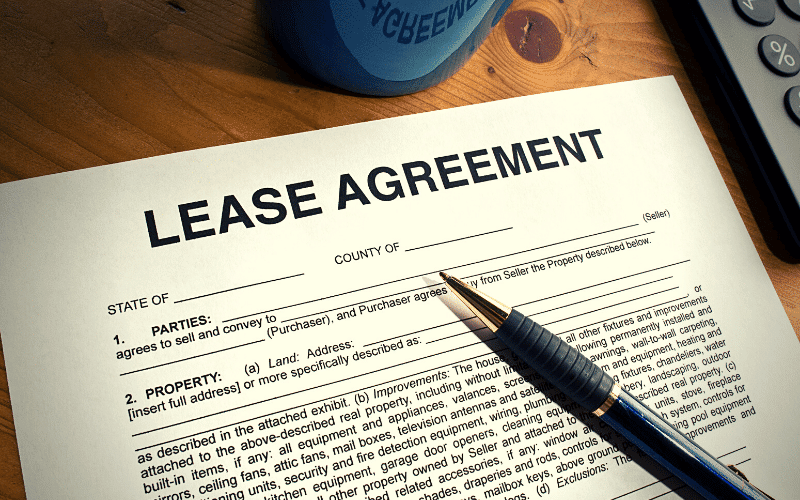Rent is rising due to a lack of inventory, economic uncertainty, and migration. Here are some things renters can do in order to make their next lease less stressful financially.
Rent is on the rise in many places, including houses and apartments. Rent is often a result of a high demand for rental housing that has a comparable supply.
According to Yardi Matrix’s National Multifamily Report, the average rent in the U.S. in July was $1,717. This is 12.6% more than in July 2021.
According to Yardi Matrix, July’s occupancy rate for rental housing was 96% on a national basis. This is a slight decrease from 2021 when rates were as high as 96.9%. However, it’s still higher than before the COVID-19 pandemic. Yardi Matrix reported an occupancy rate of 94.9% at the close of 2019.
Rents are increasing so quickly that new landlords are entering the market hoping to cash in. These investors are buying their first rental property and seem to have no problem finding tenants in this market.
Rent will be affected by vacancies, the availability of rental housing, and the overall state of the U.S. Economy. Below is a breakdown of what you can expect for the future and what are the reasons behind rising rents in 2022.
How Recession Affects Renters
Industry leaders and financial professionals can look at key areas of an economy during a recession to determine what the future holds. The stock market, unemployment, and home sales all can reflect a deeper or shallower recession. However, rents are more independent and have an independent ebb-and-flow.
“Research shows that rents don’t fall in recessions if you examine the rental index and look back at previous recessions.” Tony Baker, a professor of economics at George Washington University, says that “vacancies can increase or decrease in recessions.”
According to data from the U.S. Census Bureau, rental vacancies have been trending downward since 2009’s third quarter when they hit a historic peak of 11.1%. Based on Census Bureau data, the rate of rental vacancies was 5.6% in the second quarter of 2022. The last time quarterly vacancy rates were this low was in 1982.
Renters are concerned about affordability as rents have risen more than 12 percent since the last lease they signed. However, a recession won’t help. The high number of renters will cause landlords to increase rents, especially if they are renters who cannot afford a home.

Reasons for high rental demand
Rents go up quickly when there is enough demand for higher rates. Although the exact reasons for rising demand are different depending on where you live, what state you’re in, or what neighborhood you’re in, these are some of the factors that contribute to high rents today and possibly in the future.
- People are moving to smaller cities. People are moving to new areas that are not dependent on the location of their employers. As a result, South Dakota, for example, is seeing an increase in residents who aren’t willing to leave the state for work.
- The U.S. has a higher total population because of immigration. The pandemic caused immigration to largely stop between 2020 and 2021. However, it has now resumed. Baker states that there are more renters than ever, which could increase the short-term rental demand. However, it is possible for more people to occupy the same space as before. People who choose to live with family members or roommates now could see a delay in the increase in rental demand, as they may choose to stay on their own for at least a year.
- High home prices. Many first-time homebuyers are hesitant to purchase a home and decide to rent rather than wait because of rising home prices and higher interest rates.
- There is a low supply of rental housing. The lack of substantial rental market inventory increases the demand. This means that the U.S. has a shortage of rentals. Baker states that there are many potential ways to increase rent. However, the supply side is lacking.
Where you live will determine if you can find a rental deal.
The national averages provide a good overview of the situation but it is better to examine changes in rents locally, by the market, or by region. Many people traveled to different areas of the country after the pandemic.
In the beginning, people living in large cities wanted less density. Then, long-term remote employment options opened up to them and they became interested in secondary and third-tier housing markets. While renters have returned to major cities, smaller metropolitan areas in states such as Idaho, South Carolina, and South Carolina continue to experience rapid population growth.
T.D. says that people are less tied to their jobs than they were before the pandemic. Salman, CEO, and co-founder of Cherre, an analytics and data management platform for real estate, is based in New York City.
Markets that were not known for their density are now experiencing high rent growth because of booming demand. According to Yardi Matrix, Orlando, Florida saw its rent rise by 20.2% in July compared to the previous year.
San Francisco was, however, closer to the bottom of this report’s year-over-year rent growth with just 9%. Other major U.S. markets see rent growth year-over-year closer to the average. Atlanta, Seattle, and Los Angeles all have 14.9% and 13.2% respectively. With just 4.2% rent growth year-over-year, Minneapolis-St. Paul’s was the lowest.
“You can see some markets where rents have begun to level out and even begin to decline. There are still markets where rents grow at a very fast rate, but fundamentally,” Yardi Matrix vice president Sam Jones says that “this is because there isn’t enough supply.”
Rent relief could be difficult for markets that didn’t previously expect such rapid population growth or don’t have enough housing construction to meet demand. Salman states that rents will remain high in many secondary and tertiary markets.
Supply Struggles are likely to continue
It is not as easy as building new apartments or developing new neighborhoods to solve the housing crisis. Salman cites ongoing problems like construction material shortages, delays in material shipments, local permitting, and zoning issues. Salman says that these are all obstacles to building new supplies.
Jones notes that building permit approvals and zoning laws have been a problem for many builders over the years. It is harder to make building easier because these laws are at the local level, not at the state or federal level.
Jones believes the housing shortage, which we have, can be prevented. “It was created by man, but it is possible to reverse it. They made public policy choices that led to a shortage in housing. However, there isn’t yet a consensus at the local level on public policy. This is where the rubber meets the road and will allow for greater housing supply.”
High inflation and rising interest rates are two additional obstacles that a builder faces. These could prevent homebuyers and investors from buying new homes. According to the National Association of Home Builders and Wells Fargo Housing Market Index, builder confidence fell 12 points among single-family home builders in July. This is the largest single-month confidence drop since April 2020 and the lowest level of confidence since May 2020.

If you renew, you’ll pay less
Renters don’t have much control over whether or not they can jumpstart housing construction. Inflation is also a possibility. However, it’s possible to strategize for a lower rent when you sign your next rental agreement.
Rent increases are likely to be the lowest when you renew your lease. “Renewal rents will be much less than those being offered to new renters and the rate of growth is also lower,” Jones states that “it is still high, but not nearly as high as for new renters.”
No matter what economic circumstances you may be in, rent will continue to rise over time.
Baker states, “When your leases are renewed after one year or so, don’t assume that you’re going any better, especially with this low vacancy rate.”



